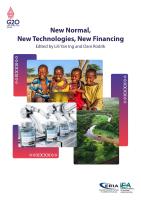
Several ASEAN countries are shifting to electric vehicles (EVs) to achieve net zero emissions. They also aspire to become an EV manufacturing hub. Photo credit: iStock/Samsul
Growing investor interest in these key industries helps boost foreign direct investments to near pre-pandemic levels in 2021.
Growing investor interest in electric vehicles (EVs), electronics, and the digital economy are expected to continue to boost foreign direct investments (FDI) in Southeast Asia, which reached near pre-pandemic levels in 2021.
In its yearly investment report released in September, the Association of Southeast Asian Nations (ASEAN) says FDI flows into the region surged 42% to $174 billion last year, reversing the decline in 2020 caused by the COVID-19 outbreak and coming closer to the all-time high of $182 billion in 2019. The robust recovery indicates ASEAN’s resilience and attractiveness as a major investment destination in the world and as an engine of growth for FDI.
The finance and banking sector was still the largest FDI recipient with $57 billion, up 22% as regional expansion plans were resumed and buoyed by an active fintech industry. Investments in manufacturing posted the strongest growth at 134%, reaching $45 billion last year, in such industries as EVs, electronics, and biomedical and pharmaceuticals. An expanding digital economy is also attracting investment in e-commerce, information and communication, and data centers.
Opportunities in the EV value chain
“Key industries, such as EVs, electronics, and the digital economy, have the potential to drive continued FDI growth in the next few years,” the report says. “Significant developments in these industries include new categories of investors, new segments of value chains, further expansion of capacity, and more activity in regional production networks.”
Southeast Asia is a potential market and manufacturing hub for EVs. Several ASEAN members are putting in place wide-ranging incentives to drive the adoption of EVs as part of climate commitments as well as to attract investments in vehicle assembly and parts manufacturing as well as in EV charging networks and infrastructure.
The report says foreign investments in the EV value chain include nickel mining and smelting, battery production, vehicle manufacturing, and related research and development activities and infrastructure. Two ASEAN members—Indonesia and the Philippines—are among the top six countries in the world with the most nickel reserves. “This resource endowment has led to an increase in extractive FDI activities in Indonesia and growing attention paid by investors to the Philippine.”
Industry 4.0 upgrades
The global shortage of semiconductors and supply chain disruptions during the pandemic drove multinational enterprises in the electronics sector to expand their presence in the region, particularly in Malaysia, the Philippines, Singapore, Thailand, and Viet Nam. Investments in electronics and electrical equipment quadrupled to $32.9 billion and comprised about 52% of announced greenfield investments in 2021, compared with 12% in 2020.
The adoption of Industry 4.0 technologies by electronics and automotive manufacturers and unicorns, startups valued at over $1 billion, is also attracting foreign investments. ASEAN is seeing a rapid rise in the number of startups, particularly in e-commerce, financial technology (fintech), and travel and hospitality industry, to 1,920 last year from only 652 in 2015.
“Startups—in particular the unicorns—have been critical in driving these new trends and contributing to the Industry 4.0 transformation in ASEAN. At the same time, private equity and venture capital firms have been playing an increasingly active role to support the growth of startups, with total assets under management rising rapidly from $36 billion in 2017 to $66 billion in 2021,” said ASEAN Secretary-General Dato Lim Jock Hoi in his foreword.
Singapore leads in the number of startups that have raised more than $1 million in funding, followed by Indonesia and Malaysia. Together, they account for 83% of these startups in the region. Viet Nam, the Philippines and Thailand (in that order) are also seeing fast growth in their startup population.
Optimistic outlook
Uncertainties stemming from the war in Ukraine, the continuing COVID-19 pandemic, high food and fuel prices, and tightening by the United States Federal Reserve may dampen the outlook for global and regional FDI.
Yet, ASEAN sees several factors supporting the high level of growth in FDI to continue in the region.
“The interaction of internal (e.g., regional integration, market attraction) and external factors (e.g., adjustment or strengthening supply chain capacity and regional corporate expansion strategies) favorable to the region will help sustain a high level of inflows. FDI in manufacturing is expected to remain strong particularly in the EV value chain, electronics and semiconductors and in activities related to the digital economy,” the report says.
The Asian Development Bank (ADB) also maintains a positive outlook for Southeast Asia. In September, it raised its economic growth forecast for the region to 5.1% in 2022 because of robust domestic demand, particularly in Indonesia and the Philippines. Last April, ADB projected a 4.9% economic growth for this year.
This article was first published by BIMP-EAGA on 12 October 2022.


